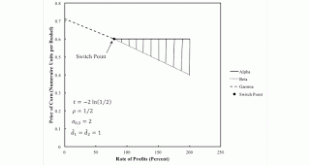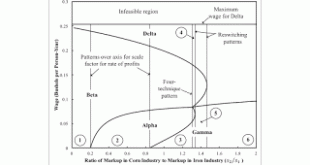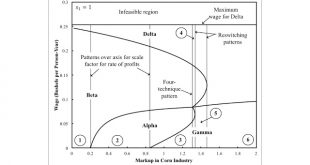This post presents a limited account of the history of analyzing prices of production with non-uniform rates of profits. I start from developments in post Sraffian price theory. D’Agata (2018) and Zambelli (2018b) have argued that Sraffian prices of production can still be defined when rates of profits have regular and persistent variations among industries. Barriers to entry or idiosyncratic properties of investment can result in such variations. Steedman (1981) presents the first...
Read More »Can We Hear Phil Mirowski In The Media Talk About Paul Milgrom And Robert Wilson?
The 2020 "Nobel Prize" in economics goes to Paul Milgrom and Robert Wilson. I suppose it is nice that economists acknowledge that markets are not natural entities but need to be constructed. For example, consider the Federal Communications Commission auction of the microwave spectrum. The 2012 "Nobel Prize" went to Alvin Roth and Lloyd Shapley. The 1996 "Nobel Prize", to William Vickrey (a Post Keynesian, by the way) was also for acution theory. The 2002 prize went to Daniel Kahneman and...
Read More »A Fluke Case For Requirements For Use
Figure 1: Prices of Production1.0 Introduction This post presents a new kind of fluke case in the analysis of the choice of technique, at least new to me. I call this a pattern for requirements for use, and it can arise only in a case of joint production. My graphs in this post have some incomprehensible notation, since I am currently exploring perturbing parameters, in line with my research agenda. I know that perturbing the requirements for use removes the indeterminancy in this example....
Read More »Origins of Selection from the Prision Notebooks?
This is C27 in Sraffas archives. 97 Fortis Green London N2 Tudor 0214 6th August 1966 Dear Piero, I do not know whether you know Roger Simon, who is Secretary of the Labour Research Department. At all events he is a great admirer and enthusiast of Gramsci. Thanks to his initiative, plans are afoot (in which I too am collaborating) to publish a new volume of Gramsci's works translated into English and Lawrence & Wishart have agreed, in principle, to undertake publication. We...
Read More »Keynes and Henderson Create A Qualitative Multiplier
In 1929, John Maynard Keynes and Hubert D. Henderson wrote, Can Lloyd George Do It? The Pledge Examined. This was published by The Nation and Athenaeum and is an examination of the pledge by the leader of the Liberal party, if elected, to dramatically reduce the amount of unemployment in Great Britain. (I was inspired to look up this work while reading Zachary Carter's new book.) Chapter VI of Keynes and Henderson is concerned with "How Much Employment Will the Liberal Plan Provide?" The...
Read More »“When Economists Are Wrong”
In a blog associated with the Frankfurter Allegmeine, Gerald Braunberger criticizes the effects of Sraffian political economy on Italian policy in the 1970s. I rely on google translate and subject matter expertise to make some sense out of this. By the way, Bertram Schefold shows up in the comments. I would like to know more about the motivations behind this. Does Braunberger think the public is increasingly aware that mainstream economics is broken? Before I disagree, I note Braunberger...
Read More »Visualizing The Effects Of Markups: A Numeric Example
Figure 1: A Pattern Diagram This post illustrates the numeric example used here. The example is of an economy in which two commodities, iron and corn, are produced by workers from inputs of iron and corn. Two processes are available for each industry, leading to a choice among four techniques. I analyze stationary states. I look at prices of production, with a bushel corn as numeraire and wages paid out of the surplus at the end of the year. Prices of production are defined so as to allow...
Read More »Visualizing the Effects of Markups on the Choice of Technique
I have a working paper. Abstract: This article extends to unequal rates of profits a derivation of prices of production from a linear program. A partition of the price-wage space is illustrated in an example with two produced commodities. The variation in the solution of the LP with perturbations of relative markups is illustrated. This analysis provides an intuitive explanation of how the reswitching of techniques and of how capital reversing can emerge in non-competitive markets.
Read More »David Graeber (1961 – 2020) On Usenet A Long Time Ago
I first became aware of David Graeber as a poster on Usenet back in the 1990s. Many people who have succeeded in this world have no interest in conducting honest discussions. I found some places where one could have cheerful talk, including with harsh disagreement. And I found other places not so much. I probably fit in with the latter. Sometime in November 1998, a thread arose, "A Donaldism for David Friedman". David Friedman is Milton's son and also promotes plutocracy under the guise...
Read More »A Derivation Of Sraffa’s First Equations
1.0 Introduction Piero Sraffa wrote down his 'first equations' in 1927, for an economy without a surplus. D3/12/5 starts with these equations for an economy with three produced commodities. I always thought that they did not make dimensional sense, but Garegnani (2005) argues otherwise. This post details Garegnani's argument, albeit with my own notation. There are arguments about how and why Sraffa started on his research project I do not address here. The question is how did he relate...
Read More » Robert Vienneau: Thoughts Economics
Robert Vienneau: Thoughts Economics



